New report exposes brutal persecution of Adivasi women defending their land 8 Mar 2022 12:23 AM (3 years ago)
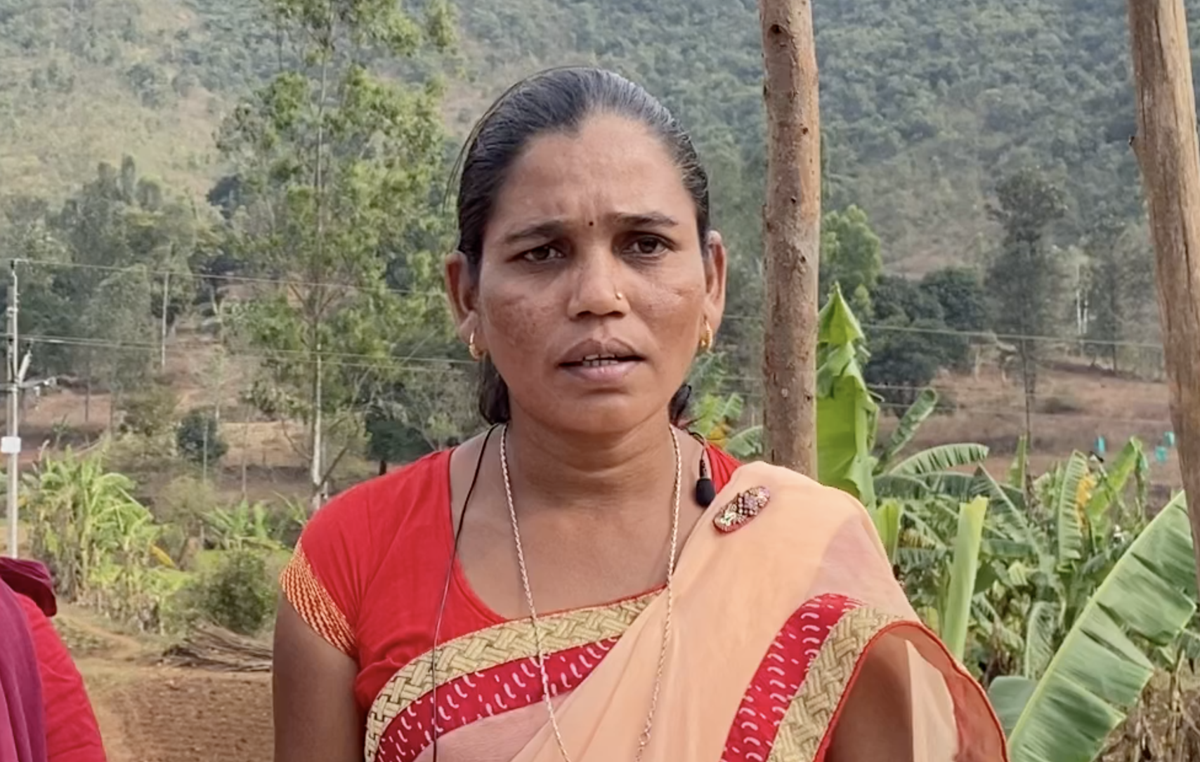
Hidme Markam, an Adivasi activist arrested for peacefully campaigning for her people’s rights. © Survival
WARNING: Contains images some may find disturbing
A devastating new report from Survival International – launched on International Women’s Day, March 8 – exposes how Adivasi (Indigenous) women in India are being brutally persecuted for defending their lands against a massive corporate and governmental mining rush.
Amongst its key findings:
- This mining rush, including plans to increase coal production to one billion tonnes a year, is massively concentrated in six central states that are home to 57 million Adivasi people, who rely on their land for their livelihoods and sacred sites.
- Adivasi women are playing a central role in resisting this destruction of their land by mining, and are being beaten, arrested, raped, imprisoned and killed because of it. Their attackers almost always act with impunity.
- Government agencies, police and the security forces are intimately involved in these attempts to terrorise Adivasi women.
- Draconian anti-terrorism laws are used to silence dissent, and any who resist are falsely labelled as members of the Maoist armed insurgency. Since Narendra Modi came to power, the number of women charged with “sedition” has nearly trebled.
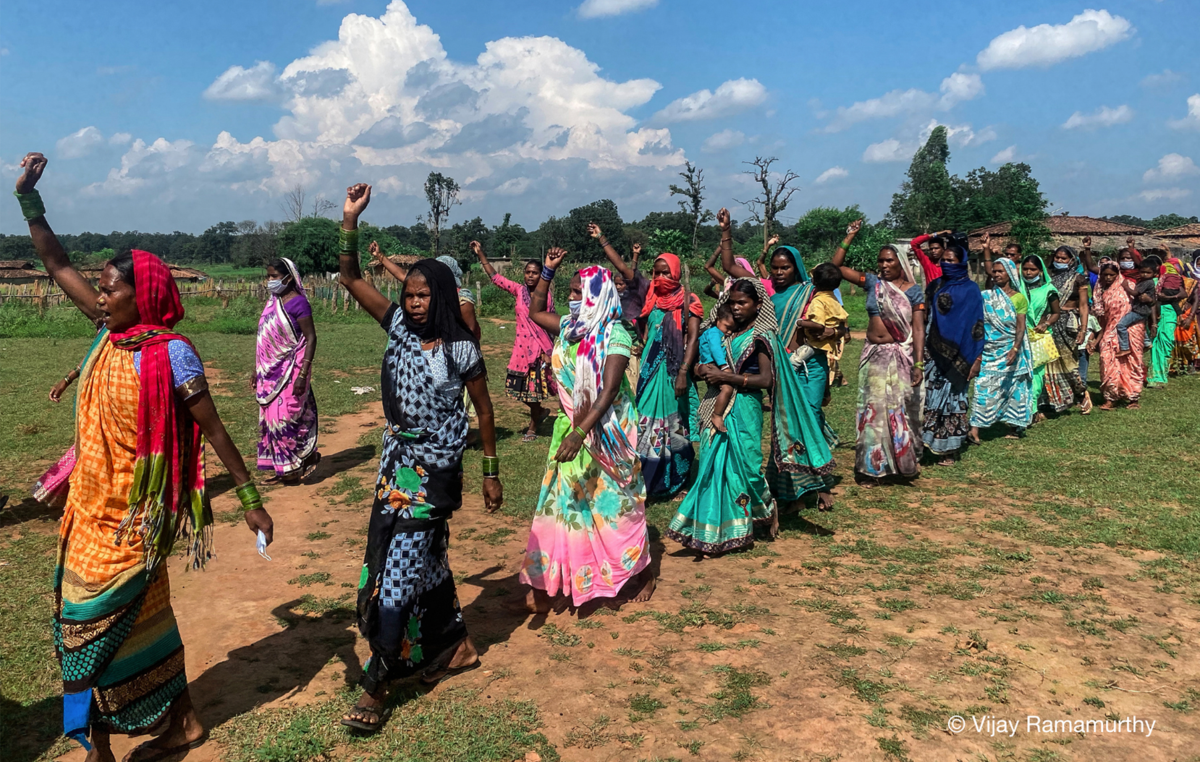
Adivasi (Indigenous) people of Hasdeo Forest protest against coal mining plans that would destroy their forest. Fattepur Village, Chhattisgarh © Vijay Ramamurthy
The report highlights several Adivasi women who have become victims of state repression:
- Hidme Markam: At an International Women’s Day event in Chhattisgarh in 2021, Adivasi activist Hidme Markam was bundled into a vehicle and taken into custody, where she remains. Her arrest was punishment for her active, public stance on resisting the mining of a site sacred to her Koya Adivasi people. She had previously said: “Villagers who protest against the government handing over these lands to corporations are being jailed. We have lost faith in the government but will continue to fight to save our sacred lands and our forests.”
- Kuni Sikaka: a Dongria Kondh woman targeted for her role in defending her people’s sacred mountain, Kuni Sikaka was arrested and paraded in front of local media as a “surrendered insurgent.”
- Soni Sori: Adivasi activist and leader Soni Sori has been incarcerated, tortured, sexually abused and faced barrages of defamation and harassment for galvanising Adivasi women to resist the violation of their lands, rights and bodies. Soni was a teacher and activist when she was arrested as an ‘insurgent’ and imprisoned, enduring horrific torture and sexual violence in prison. On her eventual release, Soni was attacked by men who rubbed caustic paste on her face, burning and scarring her. Soni continues to fight for an end to the violation of Adivasi rights and lives.
- Madkam Hidme: Security forces dragged Madkam Hidme into the forest in front of her distraught mother. Her body was returned, beaten and wrapped in plastic, a few days later. The police claim she was ‘encountered’ in the forest, and released a photo of her in crisply ironed, spotless black overalls with a gun at her side – killed, they said, after a “fierce gun battle.”

Madkam Lakshmi holds a photo that the police released of her daughter, Hidme. The police claim she was killed in a gun battle. Lakshmi saw them drag her daughter, dressed in a sari, out of their house. © The Bunt Line
Dayamani Barla, an Adivasi leader from Jharkhand is quoted in the report: “Modi’s government is violating our constitutional rights and is trying to sell every inch of our lands, mountains and rivers. Adivasi people – not only in Jharkhand but right across India – are not safe and neither are their lands and territories. Every inch of our lands is being given to the corporates.”
Dr. Jo Woodman of Survival International said today: “Across central India tens of thousands of Adivasi people are defying the corporate takeover of their lands with incredible bravery. Women are at the forefront of this resistance, and are being abused, imprisoned and killed for their courage on a truly horrific scale.
“The repression they face isn’t crushing their spirit – on the contrary, resistance is growing. But there’s an urgent need for support from around the world to join Adivasi people in opposition to this illegal and immoral assault on their lands and lives.”
Open statement from Survival International on the biggest land grab in history 2 Mar 2022 2:59 AM (3 years ago)
Dear Humanity,
We have a problem. Governments, conservation organizations and the most polluting companies, predominantly from the global north, are promoting a dangerous plan. They say it will help solve both the climate and biodiversity crises, but it won’t.
During an unnoticed high-level meeting taking place in Geneva in a few days, governments are preparing to agree on a plan that will have a dramatic impact on all of us.
They want to turn 30% of the planet into Protected Areas. This plan, known as 30×30, will be the biggest land grab in history. It will involve taking vast areas of Indigenous Peoples’ lands and turning them into militarized national parks and reserves where evictions, killings, torture and rape are commonplace.
Instead of fighting the real causes of environmental destruction and tackling those most responsible: growing overconsumption and exploitation of resources for profit led by the Global North, it is Indigenous people who will bear the brunt of these measures.
Indigenous people represent around 6% of the world’s population yet their lands make up 80% of the most biodiverse places on earth. They, who have protected the planet best, and are least responsible for environmental degradation, are set to lose the most.
Big conservation organizations, well known for their appalling human rights records, like WWF and Wildlife Conservation Society support the 30×30 plan. They’ll make millions managing the new parks and through using the stolen lands to sell carbon offsets — the notorious trick that allows polluting companies to carry on polluting, while pretending they are green. No wonder the world’s largest corporations support it too. This will only protect the interests of elites who pollute the most, while the climate, biodiversity and the world’s most vulnerable people continue to be destroyed.
As Kipchumba Rotich of the Sengwer tribe (Kenya) said: “The 30×30 conservation rule … will see more Indigenous people lose their homes, will see more Indigenous people lose their livelihoods, will see more Indigenous people lose their lives — millions of people around the world.”
This is not only a disaster for Indigenous Peoples, but for the whole of humanity. Study after study has shown respecting the land rights of Indigenous Peoples is the best way to protect our planet.
Crucial negotiations on whether the 30% target will be set are on a knife edge. It’s not too late to stop this dangerous plan. Survival has declared March 2nd as ‘Human Diversity Day’ — to draw global attention to the devastating impact of 30×30 on the whole of humanity. Without human diversity there will be no biodiversity.
30×30 will destroy millions of Indigenous and local people and give a green light to the world’s biggest polluters to carry on polluting, we cannot allow it to happen. On Human Diversity Day we’re asking the whole of humanity to join together to take action, for all our futures.
Please write to those negotiating this dangerous plan. For more information, please follow the hashtag #DearHumanity on social media networks.
Yours,
Survival International
South American Indigenous groups unite to demand urgent protection for uncontacted tribe 22 Feb 2022 2:56 AM (3 years ago)
- Organizations representing hundreds of thousands of Indigenous people in South America make public appeal for action
- Fate of unique uncontacted tribe now at a “tipping point” between survival and extermination
- Paraguay’s government has stood by and watched for years as illegal deforestation threatens the group
- Urgent call for the Inter-American Commission on Human Rights and the United Nations to intervene
Leading Indigenous organizations from across South America have made an unprecedented public appeal for urgent action to prevent the genocide of one of the most threatened uncontacted tribes in the world.
Uncontacted members of Paraguay’s Ayoreo tribe are the last uncontacted Indigenous people in South America outside the Amazon.
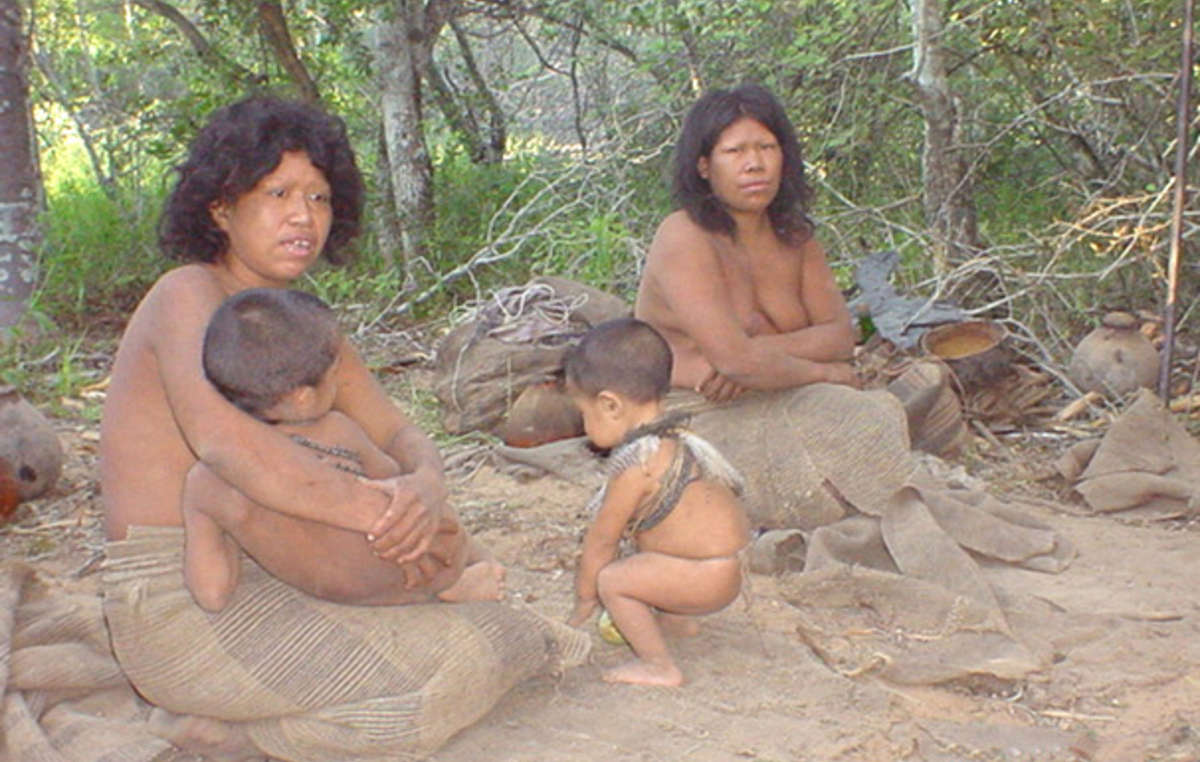
Uncontacted Ayoreo on the day they were forced out of the forest, 2004. © GAT/Survival
Vast swathes of the once-extensive Chaco forest have been cut down all around them, so the Ayoreo now live in an ever-shrinking island of forest surrounded by a sea of destruction. The area suffers the fastest rate of deforestation in the world.
Although contacted members of the tribe submitted a formal land claim to the authorities in 1993, only some parcels of land have been returned to them (following lengthy battles). Most of the Ayoreo’s ancestral forest remains in private hands, and it is being rapidly bulldozed for beef production. The beef is exported mainly to Chile, Russia and Brazil, while most of the leather is exported to the EU, almost entirely to Italy.
In the face of this imminent threat to the Ayoreo’s survival, leading Indigenous organizations across South America have now made an extraordinary public appeal for action.
They include:
- AIDESEP (inter-ethnic Association for the Development of the Peruvian Rainforest) [represents Indigenous communities across Peru’s Amazon]
- CAOI (Coordinating Body of Indigenous Organizations of the Andes)
- COIAB (Coordinating Body of Indigenous Organizations of the Brazilian Amazon)
- COICA (Coordinating Body of Indigenous Organizations of the Amazon Basin)
- CONFENIAE (Confederation of Indigenous Nations of the Ecuadorian Amazon)
- FENAMAD (Native Federation of Madre de Dios, Peru)
- ONIC (National Indigenous Organization of Colombia)
- ORPIA (Regional Organization of the Indigenous Peoples of Amazonas State, Venezuela)
- ORPIO (Regional Organization of Indigenous Peoples of the Eastern Amazon, Peru)
- UNIVAJA (Union of Indigenous Peoples of the Javari Valley, Brazil)
In their public appeal they demand that:
- the Ayoreo’s lands be returned and titled to them as a matter of urgency;
- the ranching businesses now occupying their land be expelled;
- the territory then be properly monitored and protected to prevent future destruction.
_article_column@2x.png)
Illegal deforestation now penetrating the very heart of the uncontacted Ayoreo territory. © Survival
The organizations, and the Ayoreo, believe that only if outside bodies such as the Inter-American Commission on Human Rights intervene, will the Paraguayan government do anything to stop the destruction.
Survival International, which has worked with the Ayoreo since the 1980s, is coordinating a worldwide email action and Twitter storm on February 23.
One of the contacted Ayoreo leaders, Porai Picanerai, said: “If the state refuses to act when we protest at the invasion of our territory, the cattle ranchers will occupy all our land, our relatives will die and we could soon disappear too.”
Teresa Mayo, head of Survival’s Ayoreo campaign, said today: “This unprecedented and unique appeal for the Ayoreo by Indigenous organizations from across South America shows how serious the situation now is. Despite the grave threats to their own survival, they can see just how urgent and desperate the Ayoreo case is.
“For years the Paraguayan authorities have stood by and watched as the Ayoreo’s priceless forest goes up in smoke. Satellite images from recent decades show a truly horrifying rate of destruction. It’s now only major international pressure that can prevent the total destruction of the uncontacted Ayoreo people, and the forests they have cared for for so long.”
Previously-unknown uncontacted Amazon tribe on the brink of extermination 16 Feb 2022 1:38 AM (3 years ago)

Members of an uncontacted tribe who appeared on the Peru-Brazil border in 2014, reporting a massacre of their older relatives. The newly-confirmed tribe lives in the same region. © FUNAI/Survival
An uncontacted Amazon tribe whose existence has only just been confirmed is already at imminent risk of being wiped out, while the Brazilian authorities turn a blind eye.
The tribe’s presence was recently verified by an official expedition, but their territory is unprotected, and close to an area along the Purus river in the western Amazon region of Brazil where many non-Indigenous settlers live, collect forest produce, fish and hunt.

Carrying basket discovered by FUNAI agents in land inhabited by uncontacted tribe, Purus river basin. © FUNAI
Other uncontacted groups in the neighboring Amazon state have been massacred in recent years, reportedly by loggers operating illegally, and drug traffickers.
Besides the risk of a violent attack, any encounter with outsiders would expose the tribe to diseases such as malaria and Covid-19 to which it has no immunity. Both are rife in the area.
A team of FUNAI field workers visited the area between August and October 2021 and found conclusive evidence of the tribe’s presence: hunting shelters, woven baskets, pots and bows. They also heard members of the tribe talking nearby.
Very little is known about them; they are hunter gatherers and may number several dozen people.
FUNAI’s protection team in the region sent a report to their headquarters in Brasilia requesting urgent action, including a Land Protection Order to cover the region where the tribe lives; the creation of a base for the team to monitor and protect the forest; the imposition of a “health cordon” to prevent the spread of disease; and the continued presence of a team to gather more information for the purposes of recognizing the tribe and its land.
However, FUNAI’s head office did not respond to their request, and has ignored two subsequent urgent demands for protection measures to be enacted.
COIAB (Coordinating Body of Indigenous Organizations of the Brazilian Amazon) and OPI (Observatory on Uncontacted Indigenous Peoples) have issued a statement calling on FUNAI to act: “FUNAI in Brasilia is dangerously negligent in not taking urgent measures to protect this uncontacted group…
“We’re following with great concern the continued dismantling of public policies regarding uncontacted Indigenous Peoples, led by full-scale attacks by the government on Land Protection Orders. This instrument has been fundamental in other cases, in avoiding the destruction of the lives and territories of uncontacted Indigenous groups.”
The Federation of Indigenous Organizations and Communities of the Middle Purus (FOCIMP) released a statement saying: “We are very worried and angry about the situation of our uncontacted brothers and sisters of the Mamoriá river. The risk of their genocide is certain because of FUNAI Brasilia’s delay in complying with its role in officially recognizing their presence in that region… It is unacceptable that FUNAI has done nothing in five months, putting the uncontacted at risk… We know the risk the uncontacted face from diseases and invaders, and any contact with outsiders which could lead to their extermination.”
Survival’s Research and Advocacy Director Fiona Watson said today: “Survival is deeply concerned at FUNAI’s criminal failure to fulfil its legal obligation to protect this highly vulnerable tribe, and the forest on which it depends.
“It’s the latest in a series of recent actions which show just how much FUNAI’s senior leadership is now in thrall to President Bolsonaro’s genocidal agenda.
“Brazil’s recent history shows that unless the authorities act now, an entire uncontacted people will be condemned to death, and another vital part of human diversity will be gone for ever.”
Cover-up: Brazilian government plot to open up uncontacted tribe’s territory revealed 27 Jan 2022 4:14 AM (3 years ago)
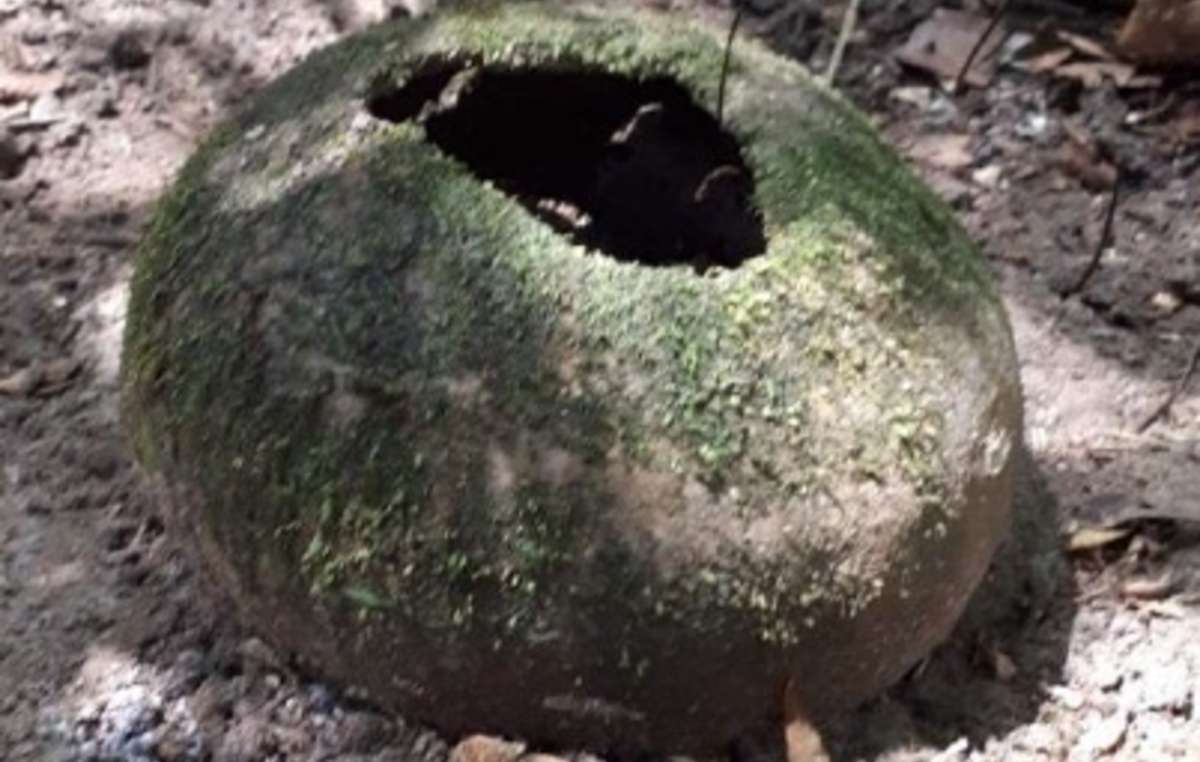
Uncontacted tribe’s pot discovered inside Ituna Itatá Indigenous Territory, August 2021. © FUNAI
Update: FUNAI’s bowed to public pressure and the demands of a federal judge, and renewed Ituna Itatá’s Land Protection Order for 6 months. It’s a major victory for the campaign.
—
An extraordinary plot to open up an uncontacted tribe’s territory for exploitation, and suppress evidence of the tribe’s existence, has been revealed in Brazil.
The cover-up involves top officials in FUNAI, the government Indigenous Affairs Agency, who have been hand-picked by President Bolsonaro. It can now be revealed that they have:
- arranged a secret meeting with a notorious politician and Bolsonaro ally who is leading the campaign to open up the territory;
- allowed him to view a confidential field report outlining new evidence of the tribe’s existence, including location data;
- denied that the new evidence exists.

Senator Zequinha Marinho (second rt) with President Bolsonaro (second left) and others. The two are close allies. © Handout
The Ituna Itatá (“Smell of Fire”) territory in Pará state was the most deforested Indigenous territory in the country in 2019, but enjoyed some measure of protection through a Land Protection Order – emergency orders that are used to protect uncontacted tribes’ territories that have not been through the long process of official demarcation.
The order expired on January 25 2022, but a Federal judge ordered FUNAI yesterday to renew it. FUNAI field workers conducted an expedition last summer, before it expired, to see if they could confirm the continued presence of the uncontacted tribe in the territory.
They found extraordinary proof that an uncontacted tribe is living there, including a pot, food remains, and a camp clearing, and submitted a report detailing the evidence.
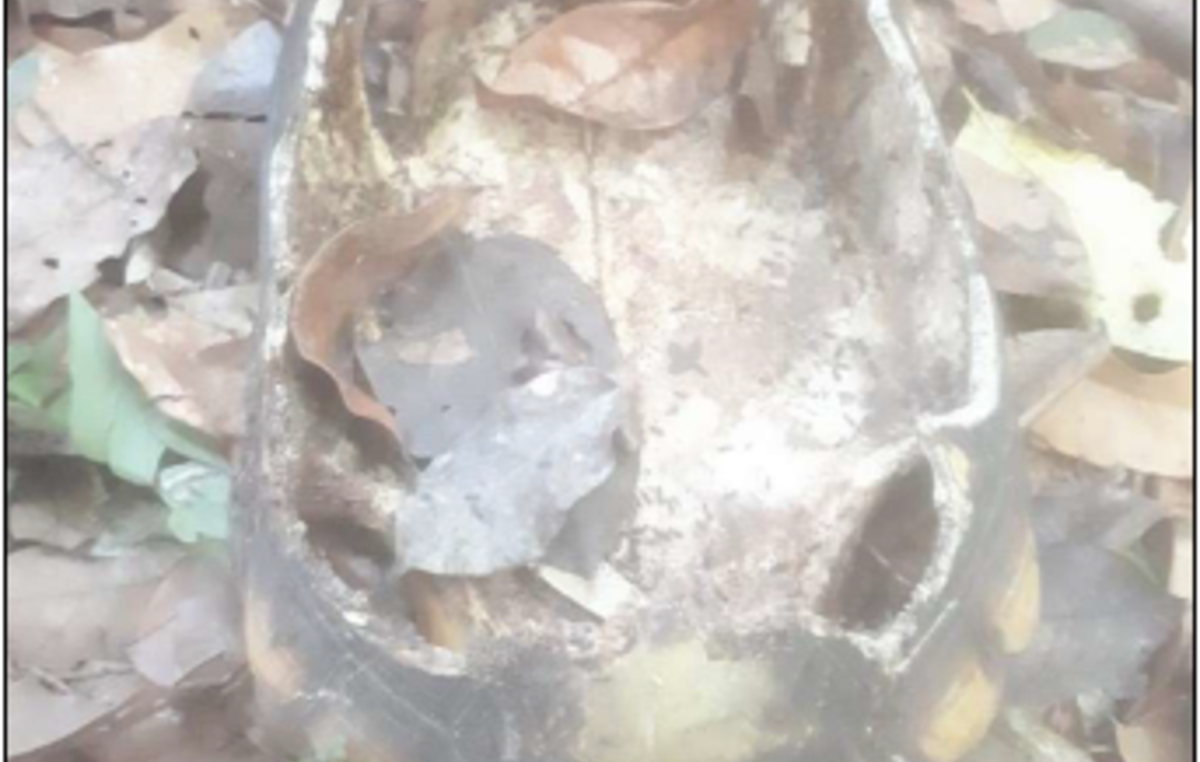
Food remains (tortoise shell) of uncontacted tribe discovered inside Ituna Itatá Indigenous Territory, August 2021. © Funai
But FUNAI has denied that there is any evidence of the uncontacted tribe’s presence. They have, however, held a secret meeting with Senator Zequinha Marinho, the notorious pro-Bolsonaro politician who, it has already been revealed, has lobbied secretly to open up Ituna Itatá territory. In that meeting they showed the Senator the full report, which includes the locations where the evidence was discovered. Such highly sensitive information has been used in the past by ranchers and loggers to attack and kill uncontacted tribes in order to steal their land.
The meeting with Senator Zequinha was not disclosed publicly on the FUNAI President’s official diary.
The Public Prosecutor’s office in Altamira, the nearest large town to Ituna Itatá, has launched an investigation, and demanded FUNAI hand over the full report, which they now have.
Survival’s Research and Advocacy Director Fiona Watson said today: “It’s impossible to imagine a greater betrayal of FUNAI’s purpose than this – the official body that exists to defend Indigenous Peoples’ rights is now actively working to wipe them out. It’s genocide in action. If this isn’t challenged and reversed, we’ll witness the complete destruction of one of the most vulnerable peoples on the planet.”
Leonardo Lenin Santos of OPI (see below) said today: “The way in which FUNAI’s management has been dealing with the Land Protection Orders is further evidence of the criminal actions of the Bolsonaro government in relation to its attack on indigenous land rights, which are guaranteed in the constitution. The case of the Ituna Itatá Indigenous Territory is very serious. A team of qualified field workers, experienced in locating and monitoring uncontacted Indigenous Peoples, carried out expeditions last year and found evidence of the presence of an uncontacted Indigenous People. However, FUNAI has rejected all the evidence documented by the field team, and is threatening and harassing them, whilst defending the invaders’ property rights. The risk of yet another genocidal process by the Brazilian state is underway.”
A new report produced as part of the “Uncontacted or Destroyed” campaign (see below) shows how Ituna Itatá is already the subject of large-scale land-grabbing, including settlements, logging, road-building and even electricity lines.
Note
Last year, the organizations COIAB (the Coordinating Body of Indigenous Organizations of the Brazilian Amazon) and OPI (the Observatory for the Human Rights of Uncontacted and Recently Contacted Indigenous Peoples), with the support of APIB (Articulação dos Povos Indígenas do Brasil), ISA (Instituto Socioambiental) and Survival International, launched the campaign “Uncontacted or Destroyed” to pressurize the Brazilian government to renew all the Land Protection Orders currently shielding uncontacted tribes’ territories.
Protest at London’s Science Museum as Indigenous peoples slam Adani sponsorship deal 25 Jan 2022 3:51 AM (3 years ago)
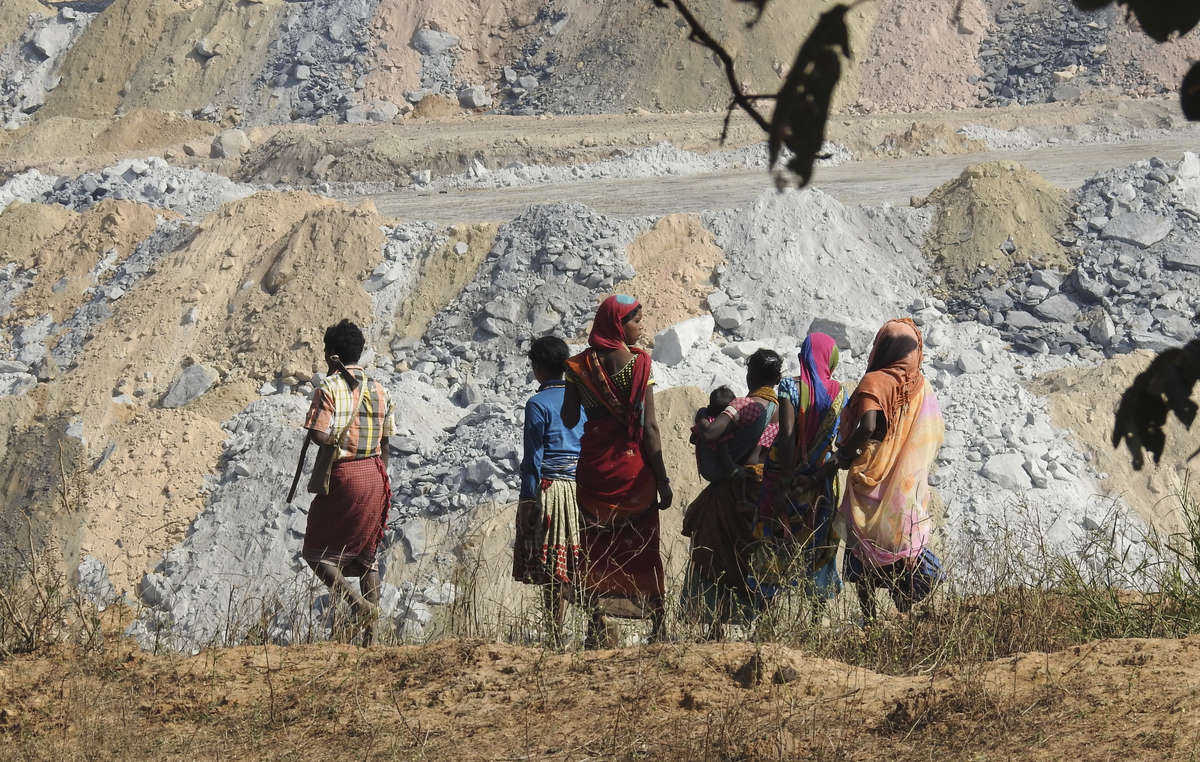
Local people look out on to the massive PEKB coal mine that has taken over their lands. © Pranav Capila
Photo opportunity:
January 26, 2022, 5pm – 6pm
Science Museum, Exhibition Rd, South Kensington, LONDON SW7 2DD
Protestors will gather outside the Science Museum in London on Wednesday to call for an end to the museum’s sponsorship deal with Adani, a huge conglomerate operating highly contested coal mines on Indigenous peoples’ ancestral lands.
The protest is in solidarity with Indigenous peoples from India, Australia and Indonesia – all countries where Adani operates mines on Indigenous land. It’s supported by Survival International, Extinction Rebellion Scientists, London Mining Network, Culture Unstained, UK Student Climate Network and Coal Action Network.
Protesters will urge the museum to listen to Indigenous voices and drop Adani Green Energy as a sponsor of its new “Energy Revolution” exhibition.
Indigenous representatives from India, Australia and Indonesia have written a letter to the museum urging it to cut its ties with the Adani Group. They state: “Indigenous communities in all these countries are experiencing land-grabs, repression, the destruction of sacred lands, pollution of air, land and water and, of course, the worsening impacts of climate change exacerbated by burning coal.” Their letter was a response to the public dismissal of Indigenous concerns by the museum’s director, Sir Ian Blatchford. Testimonies will be heard at the protest from Indigenous communities directly affected.
In India, Adani is playing a part in a massive, government-approved coal rush focused on the forested central tribal belt in Chhattisgarh, Jharkhand, and Odisha, despite fierce resistance.
In Chhattisgarh, Adani has targeted the priceless Hasdeo Forest, home to 20,000 Adivasi (Indigenous) people. Adani already operates one mine there, and another, Parsa, has just been approved.
Phillip, an Oraon activist from Jharkhand, said: “We Adivasi people can save the Earth… but they [the government] see no value for this. They just want us to be dead… To Adani and Ambani: big corporations like you people need to also pay attention. We Adivasi people will not just leave our lands to you. Because, if anything can save the world, it is the worldview of the Adivasi people. There is no other way. You are destroying the environment, which is Adivasi people’s life, by mining. Hear me straight: Change yourself, or nature will change you for the better.”
Dr Jo Woodman of Survival International said today: “Narendra Modi again and again prioritizes the wealth of his corporate allies over the rights of the Adivasi peoples of the country. The Science Museum’s deal with Adani is the worst kind of greenwashing. Indigenous people from India to Indonesia and Australia are campaigning against the company and its mines. Coal mining is not only destroying Indigenous lands, it’s catastrophic for the fight against climate change. The museum should scrap its sponsorship deal with Adani immediately. It’s on the wrong side of history.”
Journalists can access photos of the protest here.
Uncontacted tribe’s land invaded and destroyed for beef production 30 Nov 2021 1:00 AM (3 years ago)
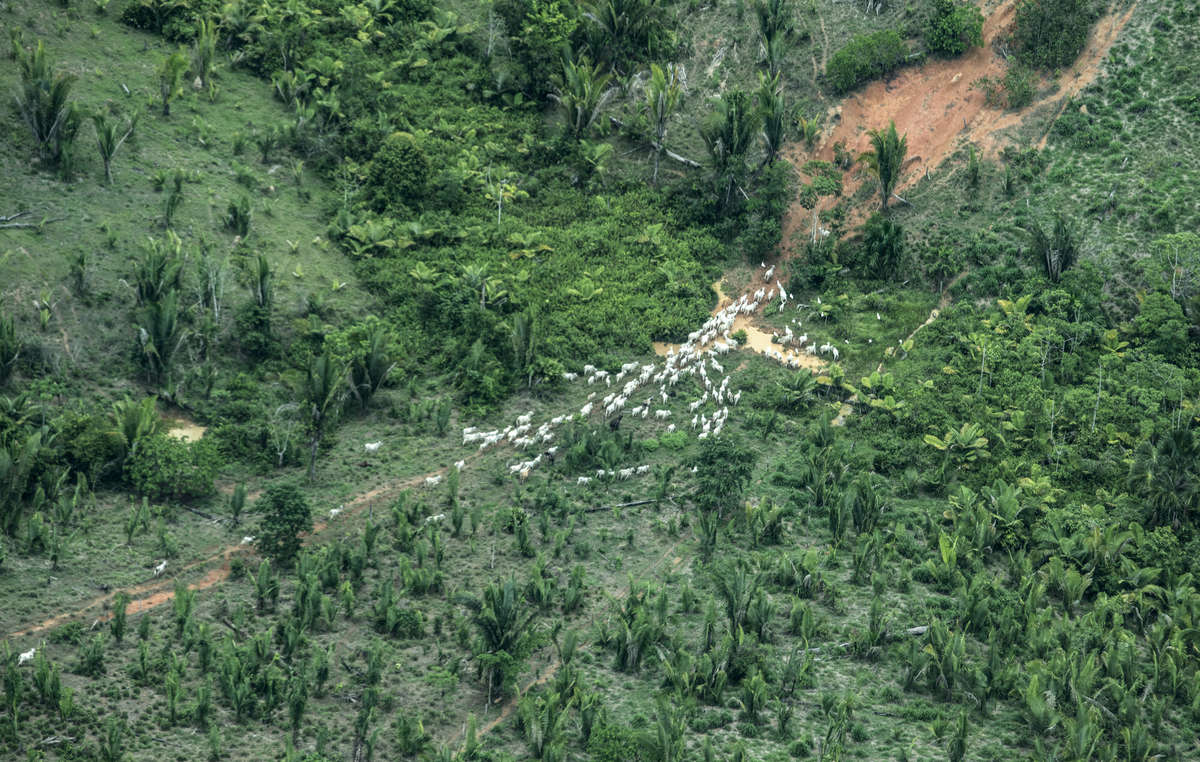
A recent overflight has revealed large-scale cattle ranching inside the Piripkura territory, a blatant violation of a new Land Protection Order. © Rogério Assis/ISA
New overflight photos have revealed that the land of one of the world’s most vulnerable uncontacted tribes is being illegally invaded and destroyed for beef production.
The land invasion now underway is in flagrant violation of a 6-month Land Protection Order issued in September which bans all outsiders from the Piripkura Indigenous Territory.
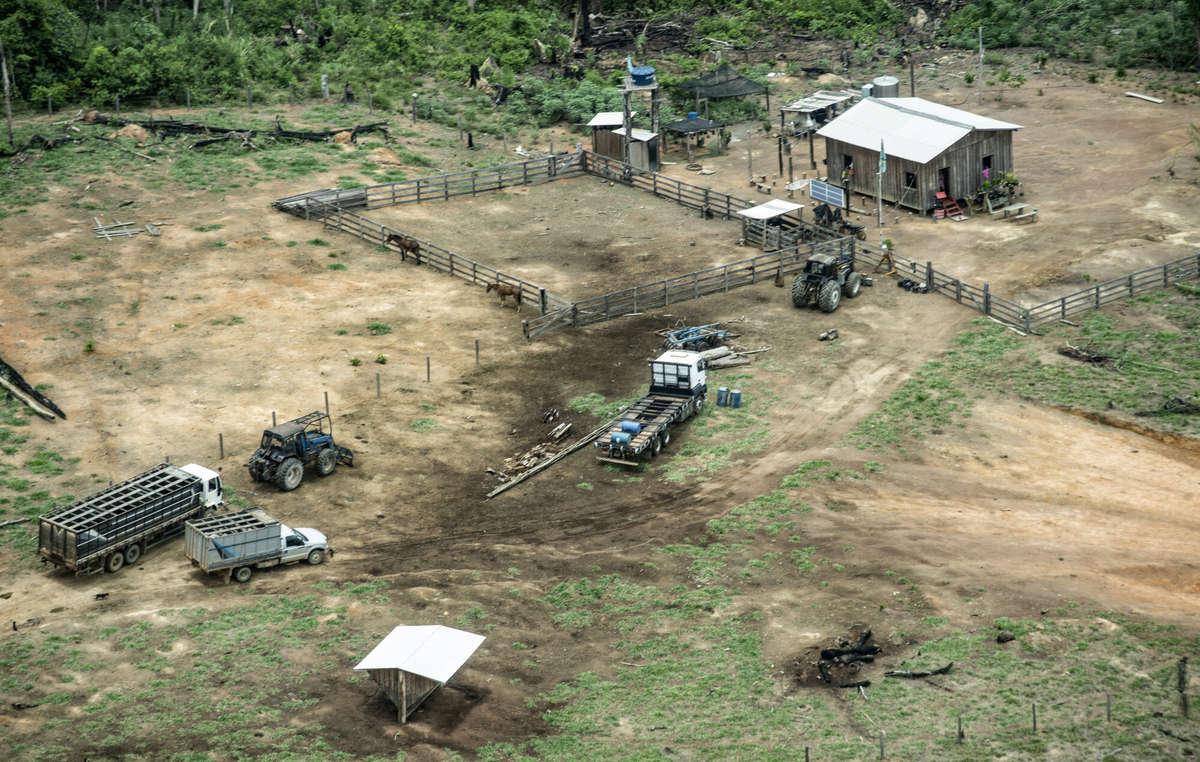
A major cattle ranching operation is now underway. © Rogério Assis/ISA
Only two members of Brazil’s Piripkura tribe are known to live in the territory, though others are also believed to live there, having retreated to the depths of the forest. Many Piripkura have been killed in past massacres.
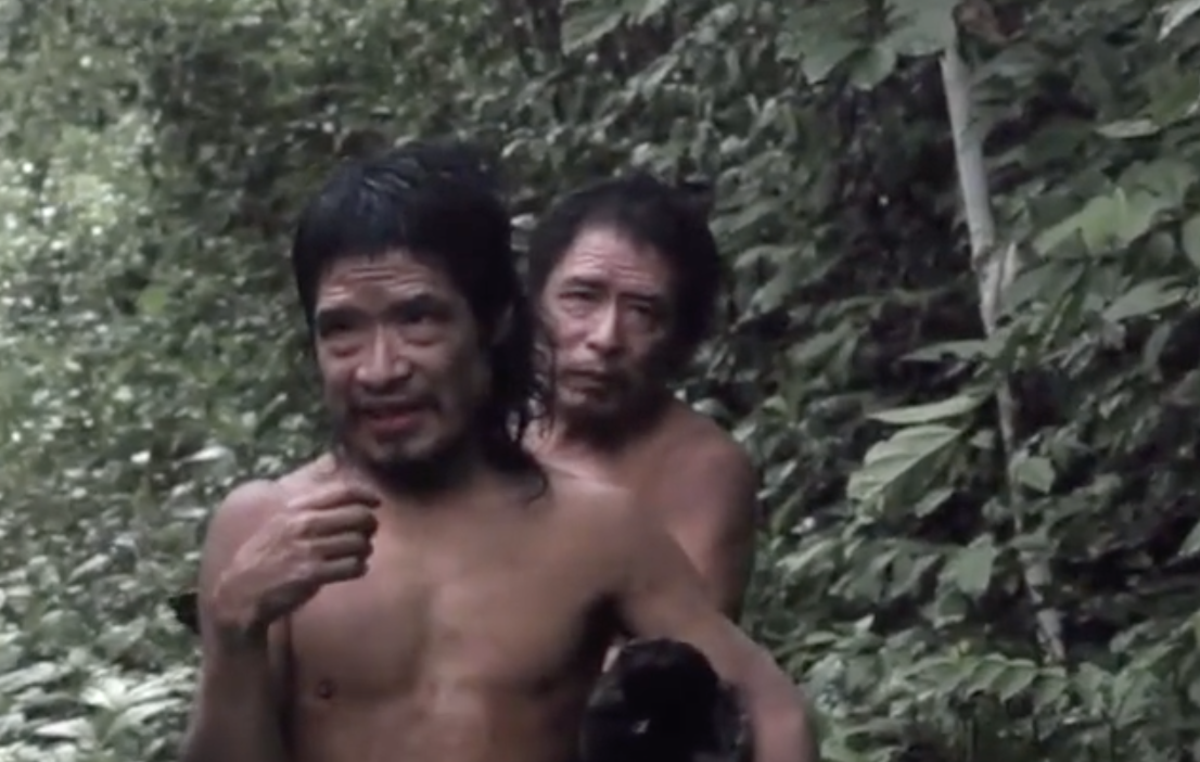
Piripkura men Baita and Tamandua, photographed during an encounter with a FUNAI unit. The two men, who are uncle and nephew, have had sporadic interactions with the local FUNAI team, but returned to live in the forest. © Bruno Jorge
The overflight was conducted last month for the “Uncontacted or Destroyed” campaign and petition organized by COIAB (the Coordinating Body of Indigenous Organizations of the Brazilian Amazon) and OPI (the Observatory for the Human Rights of Uncontacted and Recently Contacted Indigenous Peoples), with the support of APIB (Articulação dos Povos Indígenas do Brasil), ISA (Instituto Socioambiental) and Survival International.
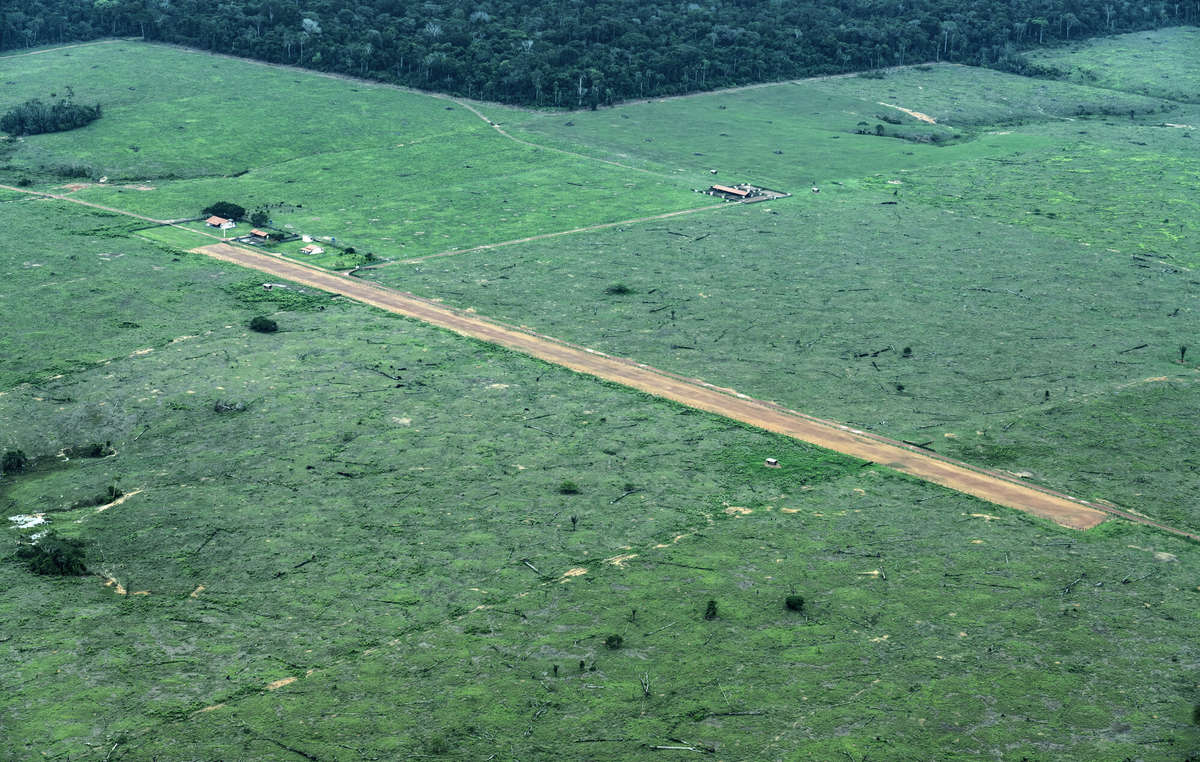
Photographs revealed an airstrip within the Piripkura Indigenous Territory. © Rogério Assis/ISA
The campaign has just released a dossier “Piripkura: an indigenous territory being destroyed for beef production.“ It’s revealed:
- Land clearances for cattle ranching have now reached an area where the uncontacted Piripkura are known to live.
- Roads, fencing and even an airstrip have been constructed, and hundreds of cattle brought in.
- The rate of deforestation in the territory has “exploded” – by more than 27,000% in the last two years.
OPI has also released a report on the invasion of the Piripkura lands. Their research has revealed that the Piripkura’s is now the most deforested uncontacted indigenous territory in Brazil. More than 12,000 hectares has already been destroyed.
The Uncontacted or Destroyed campaign highlights several uncontacted territories currently shielded by Land Protection Orders which are due to expire soon.
The only contacted Piripkura, a woman known as Rita, recently told Survival in a unique video appeal that outsiders operating illegally inside her people’s territory could soon kill her relatives, and described how nine of her relatives were massacred in one attack.
Sarah Shenker, head of Survival’s Uncontacted Tribes campaign, said today: “There could be no greater proof of the total impunity – indeed, active support – that land invaders enjoy under President Bolsonaro than this: commercial ranching operations in a vitally important indigenous territory that’s supposed to be protected by law. The invaders are fast approaching the uncontacted Piripkura. They’re resisting with all their might, and so must we. Only a major public outcry can prevent the genocide of the Piripkura and other uncontacted tribes. And an added bonus? A far cheaper and more effective way to protect Amazon rainforest than the fatal ‘solutions’ pushed by governments at COP.”
Elias Bigio of OPAN said today: "That area we flew over has been newly-cleared for beef production. They’ve already logged it, now they’re turning it into pasture for cattle.”
OPI said: "The Indigenous Territory and the Piripkura are extremely threatened. It’s the same thing that’s happened in other uncontacted tribes’ territories – the destruction is the ‘Bolsonaro Effect’, as it’s accelerated since 2019.”
New report reveals widespread human rights abuses behind wildlife conservancies in Kenya 17 Nov 2021 8:30 AM (3 years ago)
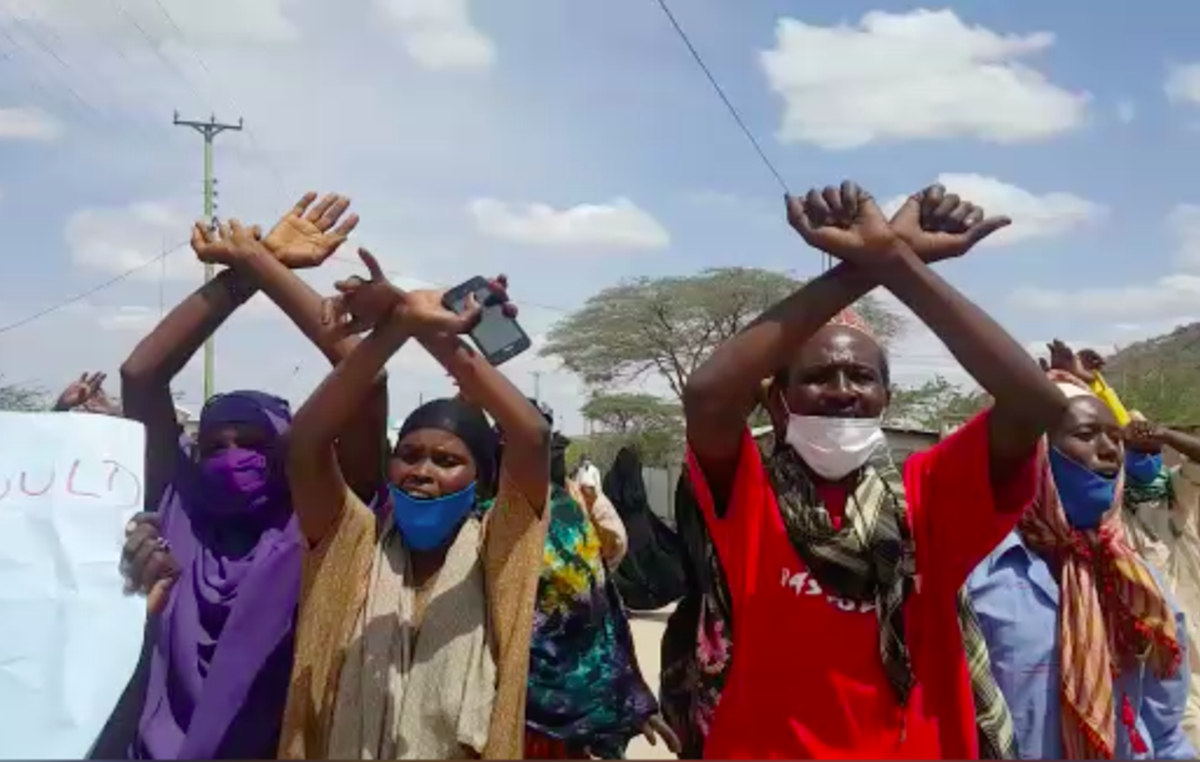
Community members chanting “Hatutaki NRT” – “We don’t want NRT here.” © Pastoralist Media Initiative
Wildlife “conservancies” in Kenya whose visitors include Britain’s Royals are implicated in the eviction, torture and murder of local Indigenous people, according to a devastating new report by the US-based Oakland Institute. Survival has been pointing to horrific abuse of this kind in conservation projects in Kenya for 10 years.
The new report investigates the notorious Northern Rangelands Trust (NRT), an organization of 39 “community conservancies” that now cover 42,000 sq km – nearly 8% of Kenya. These were formerly pastoralist communities’ grazing areas, but they have been turned into “conservation areas,” controlled by NRT, from which Indigenous people are violently excluded, and which then draw in massive funding from carbon trading, donor country grants, and from luxury safari camps and lodges.
The NRT was the initiative of Ian Craig, whose family owned a 62,000 acre cattle ranch, which was transformed into the Lewa Wildlife Conservancy. Lewa was where Prince William and Kate Middleton became engaged, and Craig remains the NRT’s “Chief of Conservation and Development.”
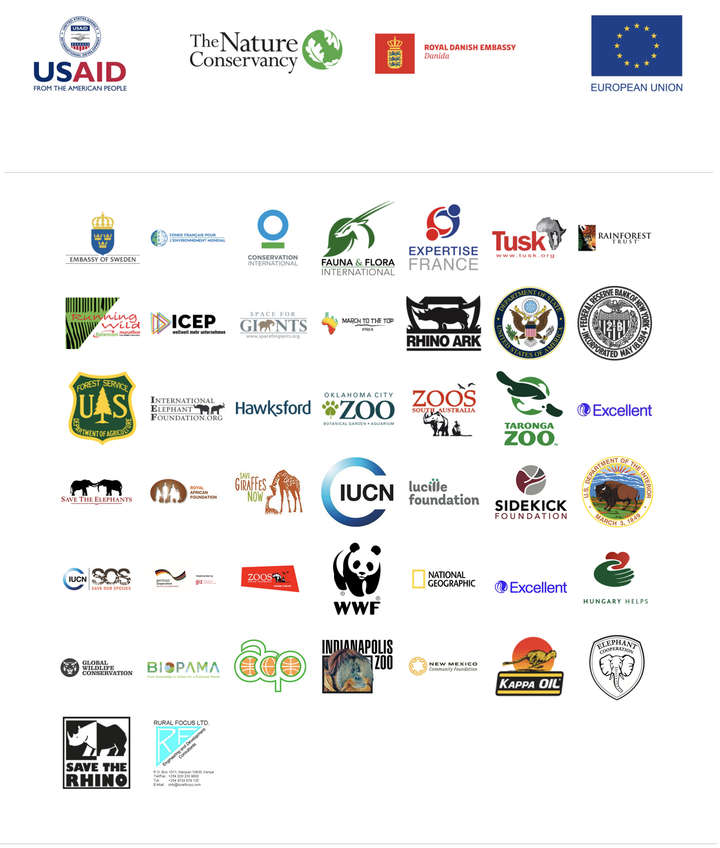
In the report, “Stealth Game: ‘community’ conservancies devastate land and lives in northern Kenya,” investigators detail shocking revelations about the operation of these so-called “conservancies,” including:
- the dispossession of Indigenous and other local people of their land;
- multiple allegations of abuse and torture including extrajudicial killings and disappearances;
- the use of militarized security forces, some trained by a company run by Ian Craig’s son;
- the massive takeover of land by a few wealthy individuals, driving pastoralists off their lands;
- intimidation, including arrests and interrogation of local community members and leaders.
The areas now under “conservancies” are the ancestral grazing lands of pastoralist peoples such as the Samburu and Maasai, who have been managing these lands since time immemorial.
Many of the conservancies, including the private ones such as Ol Jogi (owned by the billionaire Wildenstein family) now host luxury safari camps. Ol Jogi reportedly costs $210,000 to rent for a week; another, Sarara lodge, is described by one of its tour operators as “a mission of salvation, not only for the wildlife and grasslands, but also for the Samburu people.”
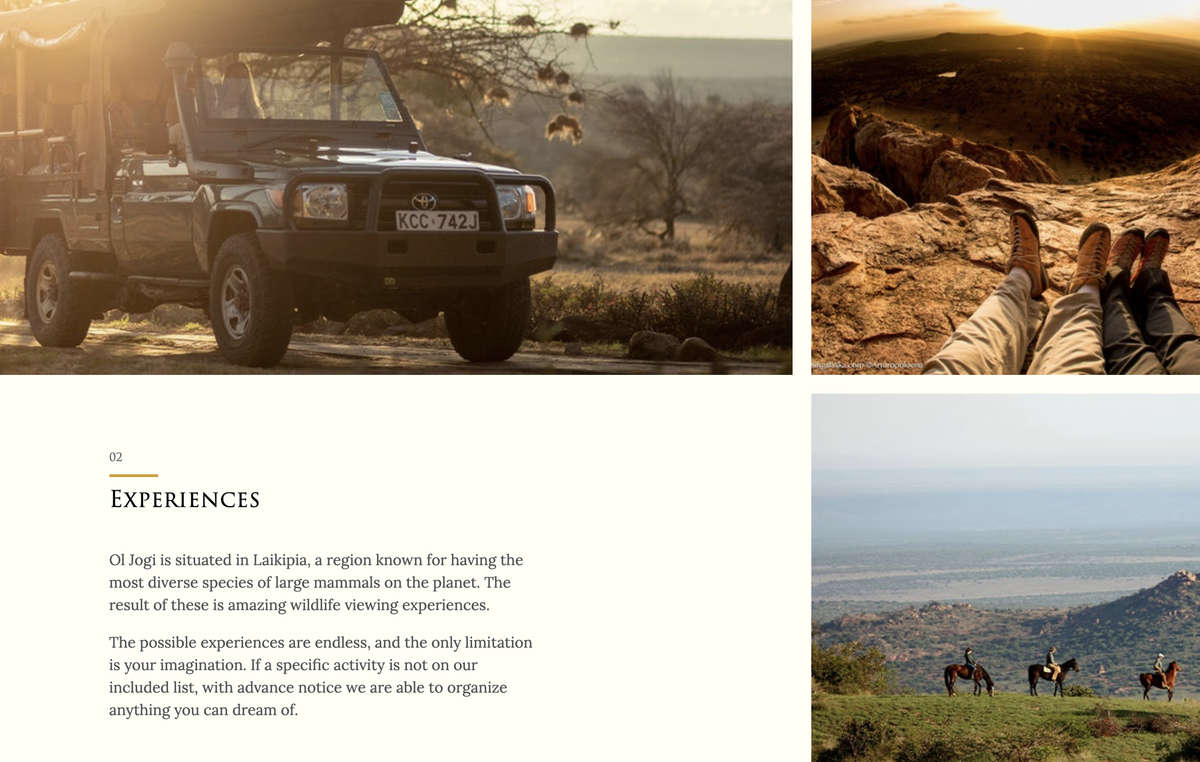
The Ol Jogi website, like many conservancy tourism ventures, presents a vision of a playground for wealthy Westerners, almost devoid of an African presence. © Ol Jogi website
The report also reveals that the NRT receives millions of dollars in government grants – from the EU, US government agencies, Denmark’s Danida, France’s AFD and others – as well as vast sums from the big conservation agencies, including The Nature Conservancy, Conservation International, WWF, Fauna & Flora International, March to the Top, Space for Giants, Save the Elephants, Rhino Ark, Tusk, and International Elephant Foundation.
Fiore Longo, head of Survival’s Decolonize Conservation campaign, said today: “Disturbingly, the NRT is increasingly moving into the opaque and dodgy carbon trading and carbon offsetting as another source of income, and this is being held up as a model by the EU in their new NaturAfrica project, despite the abundant evidence of human rights abuses.”
Kenyan ecologist and conservation expert Dr. Mordecai Ogada said today: “NRT is an idea that started small (and perhaps with good intentions) but it has now become a massive financially and socially unsustainable bubble, straddling northern Kenya with quasi-governmental power. Through manipulation of cultural structures, they have trapped communities into their contrived “conservation” model and donors into their Byzantine financial web. The longer this edifice persists, the more perilous its inevitable unraveling will be."
Survival International’s Executive Director Caroline Pearce said today: “Kenya’s “conservancies” have long cultivated an image of luxury in harmony with nature, of untouched African landscapes and happy locals, often in picturesque attire. But – as Survival has long argued and the Oakland Institute’s researchers amply demonstrate – this is simply a veneer for exploitation and abuse of power at the expense of Indigenous and other local people.
“Survival has collected testimonies from all around the world, detailing how this model of fortress conservation leads to Indigenous Peoples being evicted from their own lands, and being abused and terrorized by those who dispossess them. This is yet another example of why mainstream conservation practices must change at a fundamental level, and why the world’s tolerance for appalling abuse masked as friendly ‘conservation’ must cease. The NRT must be held to account.”